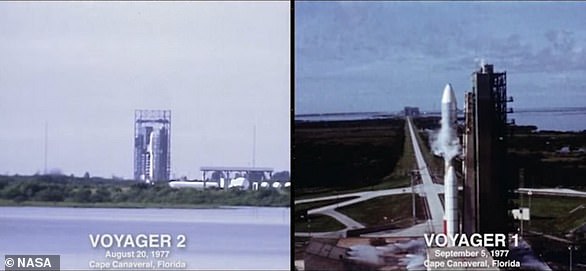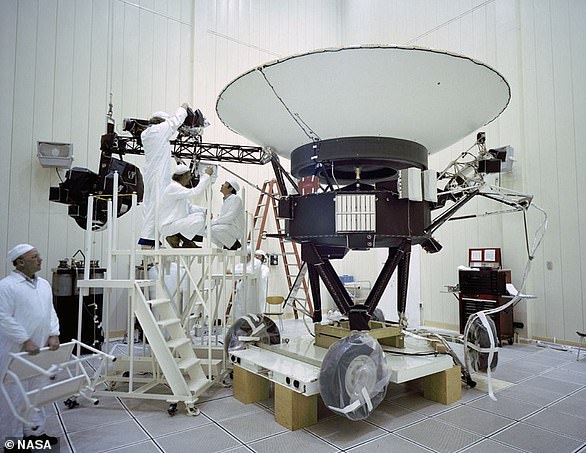Professor Brian Cox warns that human spacecraft could soon be all that’s left of ‘our increasingly stupid civilisation’ as he hails NASA’s stationary 47-year-old Voyager 1 probe – and says why we’re yet to hear from aliens
Many scientists have an idea why we haven’t heard of aliens yet.
Now legendary English physicist Professor Brian Cox has shared a compelling new theory.
In a typically witty post on
He also revealed that he thinks “it won’t be long before our spacecraft are all that’s left of our increasingly stupid civilization.”
Professor Cox was attacked after greeting NASA’s Voyager 1 probe, which is fully functioning for the first time since November.
In response to trolls on
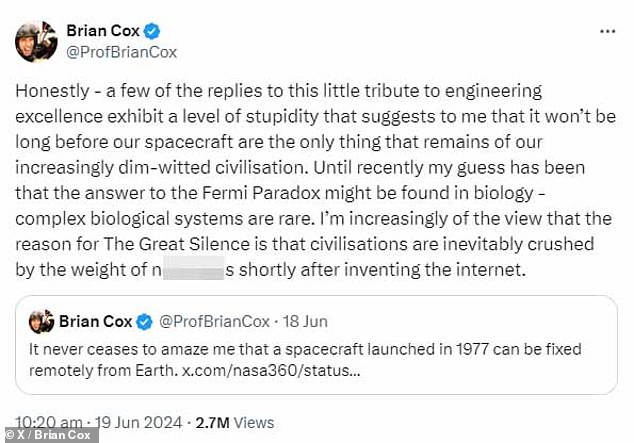
In a typically witty post on
After NASA announced that Voyager 1 had been repaired, Professor Cox wrote: “It continues to amaze me that a spacecraft launched in 1977 can be repaired remotely from Earth.”
Someone replied, “Meanwhile, the printer 300 feet away from my laptop can’t connect.”
Another said: ‘Maybe the aliens are kind enough to kick-start it out there.’
Some conspiracy theorists joined in, with one saying: ‘as if people actually believe this is real’.
The academic turned again to of our increasingly stupid civilization.
Professor Cox also mentioned the Fermi paradox – the apparent contradiction between the lack of evidence for alien civilizations and various high estimates of their likelihood.
‘Until recently, my assessment was that the answer to the Fermi paradox could be found in biology; complex biological systems are rare,” he said.
‘I increasingly believe that the reason for The Great Silence is that civilizations are inevitably crushed by the weight of n*****ds shortly after they invent the internet.’

‘Maybe the aliens gave it an edge?’: Cox was humorously trolled for hailing the aging Voyager 1 spacecraft

While Voyager 1 is more than 15 billion miles from Earth, someone responded that “the printer that’s 300 feet away from my laptop can’t connect.”

‘They turned it off and on again’: Voyager 1 launched in September 1977 and suffered from technical problems
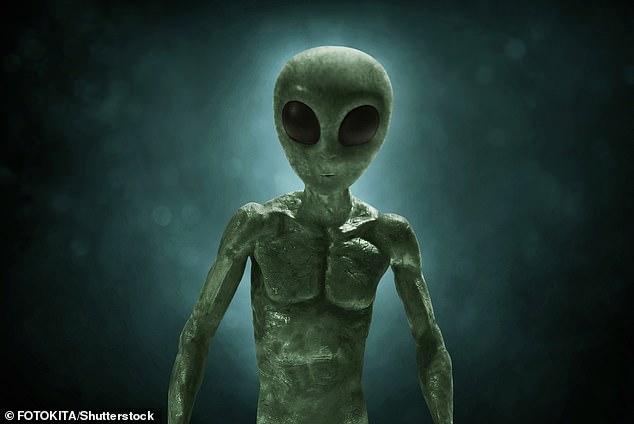
Professor Cox mentioned the Fermi paradox – the apparent contradiction between the lack of evidence for alien civilizations and various high estimates of their probability (file photo)
Voyager 1 – the farthest man-made object in existence – has been returning data from interstellar space for almost fifty years after it was launched in 1977.
It is known for returning one of the most revered astronomical images of all time: Light blue dotin which our planet is shown as a speck of dust in the vastness of space.
However, in November a glitch occurred that made the spacecraft’s data about its environment and the health of its own systems incomprehensible to the NASA scientists monitoring it.
The team partially resolved the problem in April when they prompted the spacecraft to send back technical data, including information about the spacecraft’s health and status.
The following month, two of the four science instruments were repaired after the team sent commands to them, more than 15 billion miles away.
The two other instruments required some additional work but are now also producing useful science data, NASA said in a statement last week.
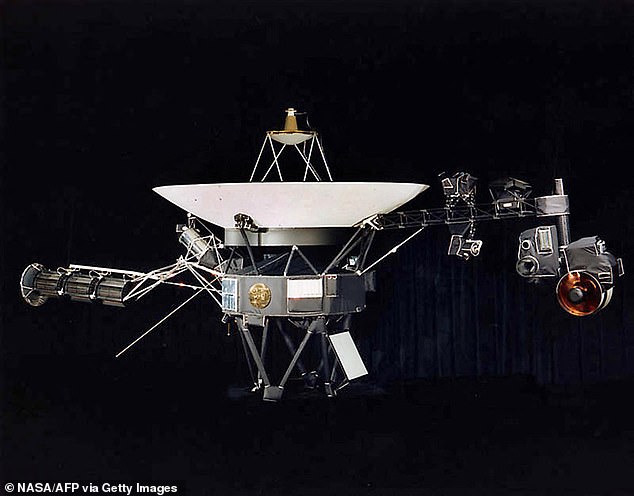
Voyager 1 was the first man-made object to leave our solar system and enter the space between the stars. Its identical twin, Voyager 2, is 20 billion kilometers away and still functional
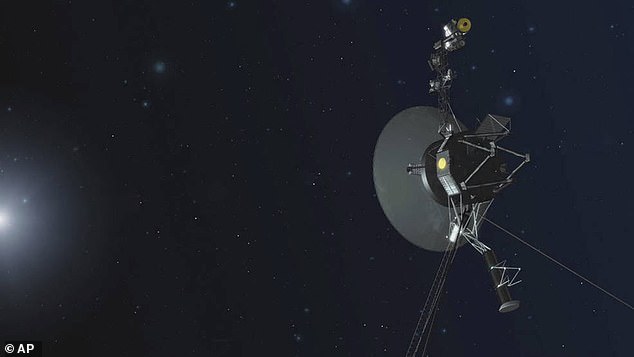
Voyager 1, Earth’s furthest spacecraft, stopped sending back comprehensible data in November 2023, but that has been resolved

Jupiter, taken from Voyager 1 about 12 million miles away in 1979
Voyager 1 is more than 15 billion miles from Earth, while its sister probe Voyager 2 is more than 12 billion miles away.
Both Voyagers were launched from Cape Canaveral in Florida in 1977, with Voyager 2 departing a month earlier than 1.
They were built to last five years, but they have far exceeded that as they complete 47 years on the road this summer.
Both spacecraft flew past Jupiter and Saturn, while Voyager 2 also flew past Uranus and Neptune.

